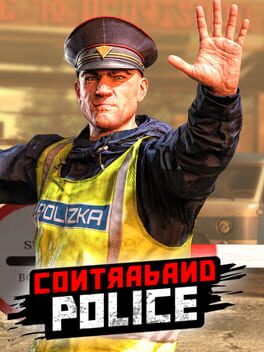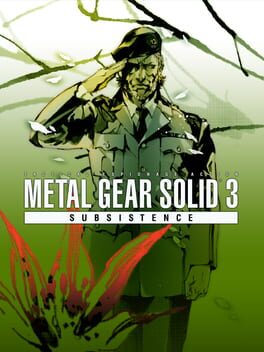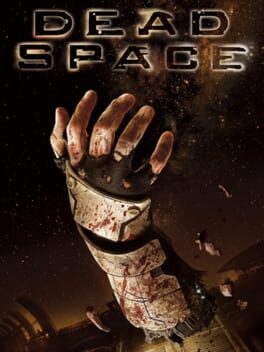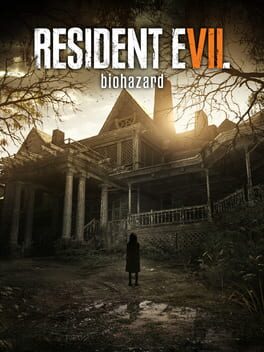Jimbo7
5 reviews liked by Jimbo7
Contraband Police
2023
Hi-Fi Rush
2023
Hot damn, this game was 🔥
Between this and Doom Eternal, I think Bethesda is trying to corner the market on Rhythm Action games.
Across the board this game did just about everything right for me: visuals, gameplay, music, characters... even the narrative, which I expected to be mostly rote, was actually really engaging and added what it needed to the mix.
The main draw of it all is that this is a rhythm-spectacle-brawler and for me it nailed that side of things. Many will probably find hitting buttons on a beat (in the middle of combat) to be a rather lofty skill bar that has to be reached before you can "get it." But once you're on the flow it really does capture that satisfaction you get when nailing a track in a more typical rhythm game.
Only here, the experience is less about perfecting a routine and more about mastering the art of freestyle. I often lament the lack of melodic music in many games (mostly from the West) and that is the case with many of the tracks here, but that was actually a boon for Hi-Fi Rush as the gameplay is the melody and the fights are your compositions.
I've seen crazier and more technical gameplay from classics of the brawler genre, like Devil May Cry. But the combos and techniques here have plenty of depth for the missions given. And the way all of it flows at a high level is far more intuitive and approachable. It might be a bit tricky to get on the beat at first but once you are almost everything feels like you're playing "the right way."
And then there's the visuals. Hot damn the visuals. Tango and Titmouse — who helped on the 2D cutscenes — packed this so full of flair and detail, yet the motion and important subjects are all so clear and easy to follow. I'd even say it surpasses Persona 5 Royal, the closest stylistic comparison I can think, if you ignore that Persona has 5-6x more game to animate for (which is a lot to ignore, frankly). The whole world, even in gameplay, feels like it's moving with the music. And most of it is.
The music itself was steeped in the classics of skater rock, which hits me right in the soul. It felt like I was back playing one of the original Tony Hawk games in all the best ways. The licensed tracks they used were superb, especially the last two features — which you can spoil for yourself if you're so inclined — and it's all weaved into the experience deftly with a dynamic orchestration system. Even if it did happen, I can't remember a single moment where there was a jarring transition or weird repetition.
The writing then is where I was, as mentioned, the most surprised. A lot of lighthearted games either phone it in with a skippable narrative or else bog down the experience by letting a generic plot set the pace. Here it's done right: it never takes control of the pace of the game, but sells you on the characters and plot by keeping a high level of "charm-per-second" in the dialogue and cutscenes. Quick dialogue and animations when the pace is fast, while waiting for the natural lulls to deliver exposition and more thoughtful conversations.
And after about 15 hours, right when it feels like it should, it all wraps up quite nicely. And if you're really itching for more gameplay, they leave you with a bunch of optional challenges to tackle afterwards.
The game is just fabulous. If I had to levy one complaint, it's that the platforming sections feel a bit stiff when you have to jump across gaps, on account of low air-control (a byproduct of how jumping works in fights).
I absolutely recommend this game to any fans of action or rhythm, and especially those who enjoy some rock-and-roll. I should note that I played on Very Hard all the way through, and recommend that others try a harder difficultly than usually would. But, if you don't think very highly of your own coordination, I'm sure you'll still have fun on normal or easy.
Just do give the game a try, either way.
Between this and Doom Eternal, I think Bethesda is trying to corner the market on Rhythm Action games.
Across the board this game did just about everything right for me: visuals, gameplay, music, characters... even the narrative, which I expected to be mostly rote, was actually really engaging and added what it needed to the mix.
The main draw of it all is that this is a rhythm-spectacle-brawler and for me it nailed that side of things. Many will probably find hitting buttons on a beat (in the middle of combat) to be a rather lofty skill bar that has to be reached before you can "get it." But once you're on the flow it really does capture that satisfaction you get when nailing a track in a more typical rhythm game.
Only here, the experience is less about perfecting a routine and more about mastering the art of freestyle. I often lament the lack of melodic music in many games (mostly from the West) and that is the case with many of the tracks here, but that was actually a boon for Hi-Fi Rush as the gameplay is the melody and the fights are your compositions.
I've seen crazier and more technical gameplay from classics of the brawler genre, like Devil May Cry. But the combos and techniques here have plenty of depth for the missions given. And the way all of it flows at a high level is far more intuitive and approachable. It might be a bit tricky to get on the beat at first but once you are almost everything feels like you're playing "the right way."
And then there's the visuals. Hot damn the visuals. Tango and Titmouse — who helped on the 2D cutscenes — packed this so full of flair and detail, yet the motion and important subjects are all so clear and easy to follow. I'd even say it surpasses Persona 5 Royal, the closest stylistic comparison I can think, if you ignore that Persona has 5-6x more game to animate for (which is a lot to ignore, frankly). The whole world, even in gameplay, feels like it's moving with the music. And most of it is.
The music itself was steeped in the classics of skater rock, which hits me right in the soul. It felt like I was back playing one of the original Tony Hawk games in all the best ways. The licensed tracks they used were superb, especially the last two features — which you can spoil for yourself if you're so inclined — and it's all weaved into the experience deftly with a dynamic orchestration system. Even if it did happen, I can't remember a single moment where there was a jarring transition or weird repetition.
The writing then is where I was, as mentioned, the most surprised. A lot of lighthearted games either phone it in with a skippable narrative or else bog down the experience by letting a generic plot set the pace. Here it's done right: it never takes control of the pace of the game, but sells you on the characters and plot by keeping a high level of "charm-per-second" in the dialogue and cutscenes. Quick dialogue and animations when the pace is fast, while waiting for the natural lulls to deliver exposition and more thoughtful conversations.
And after about 15 hours, right when it feels like it should, it all wraps up quite nicely. And if you're really itching for more gameplay, they leave you with a bunch of optional challenges to tackle afterwards.
The game is just fabulous. If I had to levy one complaint, it's that the platforming sections feel a bit stiff when you have to jump across gaps, on account of low air-control (a byproduct of how jumping works in fights).
I absolutely recommend this game to any fans of action or rhythm, and especially those who enjoy some rock-and-roll. I should note that I played on Very Hard all the way through, and recommend that others try a harder difficultly than usually would. But, if you don't think very highly of your own coordination, I'm sure you'll still have fun on normal or easy.
Just do give the game a try, either way.
Dead Space
2008
Dead Space is one of many Western Resident Evil 4-likes, transposing the survival action format to a science-fiction horror setting that combines the dingy, work-a-day industrial space ship of Alien with the gory, fleshy creature design of The Thing. I'm a sucker for this kind of setting, and while I didn't care about the story or characters at all, I mostly had a good time with the game.
Compared to Resident Evil 4, Dead Space has a lot less gameplay friction but manages to be, at least for me, at least for a while, a lot scarier. Horror games always get under my skin, and I felt a consistent sense of suspense piloting Isaac through unfamiliar, shadowy parts of SS Ishimura. This mostly wore off after say the first half of the game, though even near the end, when I had learned most of the game's spooky tricks and felt as one with my pulse rifle and plasma cutter, there was always the underlying threat that a monster might jump out of anywhere—and often, they did! I'm pretty susceptible to this kind of feeling, and really treasure it in films and games—it's like a roller coaster you can ride at home. Dead Space's atmosphere is awesome and the best part of the game.
While I definitely felt suspense playing this game, I rarely felt the dread that typically comes with the survival horror genre; very rarely did I feel unprepared or resource scarce. Playing on the medium difficulty, I had the opposite problem: I had so many items that I was constantly having to visit the store to drain my inventory. I did play carefully and thoughtfully, and decided early on that I would stick to using the rifle and cutter. This let me sell every other ammo type I found. I sold every single air fan and stasis refill—every time I ran out of stasis fuel there would be a free recharge somewhere nearby, and there was always one near puzzles that required the ability. I sold most of the med kits I found (always felt like I had plenty). And I often even felt comfortable enough selling excess bullets, if I was close to affording a power node (I always kept at least one on me in case I ran into a loot room). Through this kind of intelligent scrimping and saving I had fully upgraded my two weapons entirely in the first 7 chapters of the game, and had also bought every armor upgrade as soon as it was available.
Even though I only used these two weapons for the majority of the game, I never felt like I was missing anything in my armory. It wasn't until the tenth chapter that I started purchasing other weapons—I picked up the flame thrower and the shotgun like force gun. I never found a great use for the flame thrower, but got a lot of use out of the force gun, especially when it came to the tiny masts of flesh that will crawl around in a horde and jump on you. In replays, or if I play the sequel or remake, I'll probably make picking up the force gun equivalent more of a priority, but like I said, it never felt completely necessary. Besides the lack of an enemy type clearly calling for a different approach, I was never pressed to use another weapon out of sheer ammo necessity like I do in Resident Evil.
Each level has a similar loop—there's a problem you need to solve for story reasons, and you're sent off to a different part of the capital ship to resolve it. You wander through the spooky hallways, fighting enemies completing puzzles, until you reach the end of the section. At the end of each level is a boss battle, a particularly large scale puzzle, or a mini-game. I never completely jived with these parts of the game, instead mostly liking the enemy encounters and atmosphere. The puzzles felt tedious or unclear. For example, I was stuck for a few days on the part where you place a tracker on an asteroid. I would immediately get killed, and I felt like I just couldn't get the timing right. It turned out the solution was to time your dive onto the asteroid then immediately walk around the asteroid to outside the ship, where there is no spinning death obstacle. I felt like a moron, but I don't think the option was very clearly communicated. Even when the puzzles aren't outright annoying, they could feel tedious; maneuvering a bunch of satellites in a circle just feels like I'm slowing down to deal with busy work between the parts that are fun. The same goes for the turret mini-games that make me want to bang my head against a wall in every video game, and to a lesser extent the boss battles, which are easy-peasy "shoot the weak spot and strafe" affairs. But at least the boss battles have some spectacle to them.
As to the regular enemies, I had a lot of fun fighting them. Not as much fun as an encounter in Resident Evil 4, but it never got old popping limbs off enemies, or unloading way too many pulse rounds into a baby. My big problem, when I had one, was seeing them. The elite class of certain monsters all look like they've been scorched black, and can be hard to make out as they crawl or bound across geometry. One late enemy type, the one that does the cliché creepy juddering, fixes this by having them wear white military uniforms; I wish the elite enemies had a similar paler features, or something else to distinguish them without making them harder to see. The effect of them suddenly popping out of the dark backgrounds isn't really worth the frustration of not being able to quickly spot the baby that's shooting you.
Altogether I had a good enough time playing about 45 minutes a day for a week or so (finishing a little more than 9 hours by the count on my save), though I was never compelled to jump back in like I am with the games I really love. Part of that is the fear factor, but a lot of it was the trudgery.
Compared to Resident Evil 4, Dead Space has a lot less gameplay friction but manages to be, at least for me, at least for a while, a lot scarier. Horror games always get under my skin, and I felt a consistent sense of suspense piloting Isaac through unfamiliar, shadowy parts of SS Ishimura. This mostly wore off after say the first half of the game, though even near the end, when I had learned most of the game's spooky tricks and felt as one with my pulse rifle and plasma cutter, there was always the underlying threat that a monster might jump out of anywhere—and often, they did! I'm pretty susceptible to this kind of feeling, and really treasure it in films and games—it's like a roller coaster you can ride at home. Dead Space's atmosphere is awesome and the best part of the game.
While I definitely felt suspense playing this game, I rarely felt the dread that typically comes with the survival horror genre; very rarely did I feel unprepared or resource scarce. Playing on the medium difficulty, I had the opposite problem: I had so many items that I was constantly having to visit the store to drain my inventory. I did play carefully and thoughtfully, and decided early on that I would stick to using the rifle and cutter. This let me sell every other ammo type I found. I sold every single air fan and stasis refill—every time I ran out of stasis fuel there would be a free recharge somewhere nearby, and there was always one near puzzles that required the ability. I sold most of the med kits I found (always felt like I had plenty). And I often even felt comfortable enough selling excess bullets, if I was close to affording a power node (I always kept at least one on me in case I ran into a loot room). Through this kind of intelligent scrimping and saving I had fully upgraded my two weapons entirely in the first 7 chapters of the game, and had also bought every armor upgrade as soon as it was available.
Even though I only used these two weapons for the majority of the game, I never felt like I was missing anything in my armory. It wasn't until the tenth chapter that I started purchasing other weapons—I picked up the flame thrower and the shotgun like force gun. I never found a great use for the flame thrower, but got a lot of use out of the force gun, especially when it came to the tiny masts of flesh that will crawl around in a horde and jump on you. In replays, or if I play the sequel or remake, I'll probably make picking up the force gun equivalent more of a priority, but like I said, it never felt completely necessary. Besides the lack of an enemy type clearly calling for a different approach, I was never pressed to use another weapon out of sheer ammo necessity like I do in Resident Evil.
Each level has a similar loop—there's a problem you need to solve for story reasons, and you're sent off to a different part of the capital ship to resolve it. You wander through the spooky hallways, fighting enemies completing puzzles, until you reach the end of the section. At the end of each level is a boss battle, a particularly large scale puzzle, or a mini-game. I never completely jived with these parts of the game, instead mostly liking the enemy encounters and atmosphere. The puzzles felt tedious or unclear. For example, I was stuck for a few days on the part where you place a tracker on an asteroid. I would immediately get killed, and I felt like I just couldn't get the timing right. It turned out the solution was to time your dive onto the asteroid then immediately walk around the asteroid to outside the ship, where there is no spinning death obstacle. I felt like a moron, but I don't think the option was very clearly communicated. Even when the puzzles aren't outright annoying, they could feel tedious; maneuvering a bunch of satellites in a circle just feels like I'm slowing down to deal with busy work between the parts that are fun. The same goes for the turret mini-games that make me want to bang my head against a wall in every video game, and to a lesser extent the boss battles, which are easy-peasy "shoot the weak spot and strafe" affairs. But at least the boss battles have some spectacle to them.
As to the regular enemies, I had a lot of fun fighting them. Not as much fun as an encounter in Resident Evil 4, but it never got old popping limbs off enemies, or unloading way too many pulse rounds into a baby. My big problem, when I had one, was seeing them. The elite class of certain monsters all look like they've been scorched black, and can be hard to make out as they crawl or bound across geometry. One late enemy type, the one that does the cliché creepy juddering, fixes this by having them wear white military uniforms; I wish the elite enemies had a similar paler features, or something else to distinguish them without making them harder to see. The effect of them suddenly popping out of the dark backgrounds isn't really worth the frustration of not being able to quickly spot the baby that's shooting you.
Altogether I had a good enough time playing about 45 minutes a day for a week or so (finishing a little more than 9 hours by the count on my save), though I was never compelled to jump back in like I am with the games I really love. Part of that is the fear factor, but a lot of it was the trudgery.
The first half of the game is genuinely terrifying at times, took me back to being a kid playing the first Resident Evil on PlayStation 1 and putting off going down certain corridors and rooms I didn't like the look of. It kind of loses a bit of steam at the end but still doesn't drop too far off. This was the next mainline game after Resident Evil 6 and it was definitely the shot in the arm that the franchise needed.




